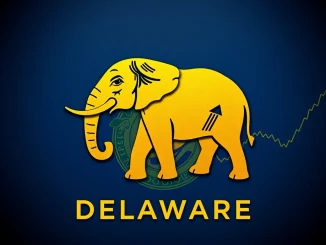
The stablecoin arena is undergoing a seismic shift! Forget quiet corners – the competition is exploding as traditional financial giants like banks and payment firms charge into the market. According to Ran Goldi, SVP of payments at Fireblocks, we’re witnessing a pivotal moment, a new chapter in the stablecoin story. Get ready for a wave of innovation and adoption, fueled by evolving regulations and the unstoppable march of digital finance.
Why Bank Stablecoins Are the Next Big Thing in Crypto Payments
What’s driving this surge of interest from banks in stablecoins? It boils down to a perfect storm of factors, all converging to create an environment ripe for disruption:
- Regulatory Clarity on the Horizon: For years, regulatory uncertainty cast a shadow over the crypto landscape. But now, with landmark regulations like the EU’s MiCA (Markets in Crypto-Assets) and potential U.S. legislation inching closer, banks are gaining the confidence to dive in. MiCA, in particular, provides a framework for licensing and operating with stablecoins within Europe, making it a more attractive and regulated space for traditional players.
- Cross-Border Payments Revolution: Traditional cross-border payments are often slow, expensive, and cumbersome. Stablecoins offer a compelling alternative – faster, cheaper, and more efficient transactions across borders. Goldi highlights the rising adoption of stablecoins in cross-border payments, noting that banks in Brazil and Singapore are already actively leveraging this technology. This real-world use case is a powerful motivator for further adoption.
- Demand for Digital Currency is Skyrocketing: The world is becoming increasingly digital, and the demand for digital currencies is no longer a niche interest. Businesses and consumers alike are seeking faster, more accessible, and programmable forms of money. Stablecoins, pegged to fiat currencies like the US dollar or Euro, offer the stability of traditional currencies with the speed and efficiency of blockchain technology.
- Banks Seek Innovation and New Revenue Streams: In a rapidly evolving financial landscape, banks are under pressure to innovate and find new revenue streams. Stablecoins represent a significant opportunity for banks to modernize their infrastructure, offer new services, and tap into the burgeoning crypto market.
The Stablecoin Landscape: A Battle for Dominance
While USDT (Tether) currently reigns supreme as the dominant stablecoin globally, the landscape is poised for a dramatic reshuffle. USDC (Circle), licensed under MiCA, is strategically positioned to gain significant traction in Europe thanks to the regulatory framework. And with the expected influx of new bank-issued stablecoins, the competition is set to become even more intense.
[img src=”placeholder-image-stablecoins.jpg” alt=”Stablecoin Market Share”]
Projected shifts in stablecoin market share as new players enter.
What to Expect: Up to 50 New Stablecoins by Year-End?
Ran Goldi’s prediction of up to 50 new stablecoins launching by the end of the year is a bold statement, but it underscores the momentum building in the market. This doesn’t necessarily mean 50 successful stablecoins will emerge, but it signifies a massive wave of experimentation and innovation. We can anticipate a diverse range of stablecoins, potentially pegged to various fiat currencies, commodities, or even baskets of assets.
The Timeline: Bank Stablecoin Adoption by 2026?
While the excitement is palpable, widespread implementation of bank stablecoins is not an overnight phenomenon. Goldi suggests that many banks are currently in the strategy drafting phase, with actual implementations likely starting around 2026. This timeline reflects the complexities involved in integrating new technologies into existing banking infrastructure, navigating regulatory hurdles, and ensuring security and compliance.
Challenges and Opportunities Ahead
The rise of bank stablecoins presents both exciting opportunities and significant challenges:
| Opportunities | Challenges |
|---|---|
| Enhanced efficiency and speed of payments | Regulatory fragmentation and global harmonization |
| Reduced transaction costs, especially for cross-border transfers | Interoperability between different stablecoin platforms |
| New revenue streams for banks and payment firms | Security risks and the need for robust cybersecurity measures |
| Increased financial inclusion and access to digital finance | Public understanding and adoption of stablecoins |
| Programmability and innovation in financial services | Potential for market manipulation and illicit activities |
The Future of Digital Currency is Here
The stablecoin market is not just heating up – it’s reaching a boiling point. The entry of banks and payment giants, driven by regulatory tailwinds and the undeniable demand for digital currency, signals a transformative shift in the financial landscape. While challenges remain, the potential benefits of bank-issued stablecoins – faster payments, reduced costs, and increased financial innovation – are too significant to ignore. Keep a close watch on this space; the next few years will be pivotal in shaping the future of money and payments. The revolution is underway, and stablecoins are at the forefront.



